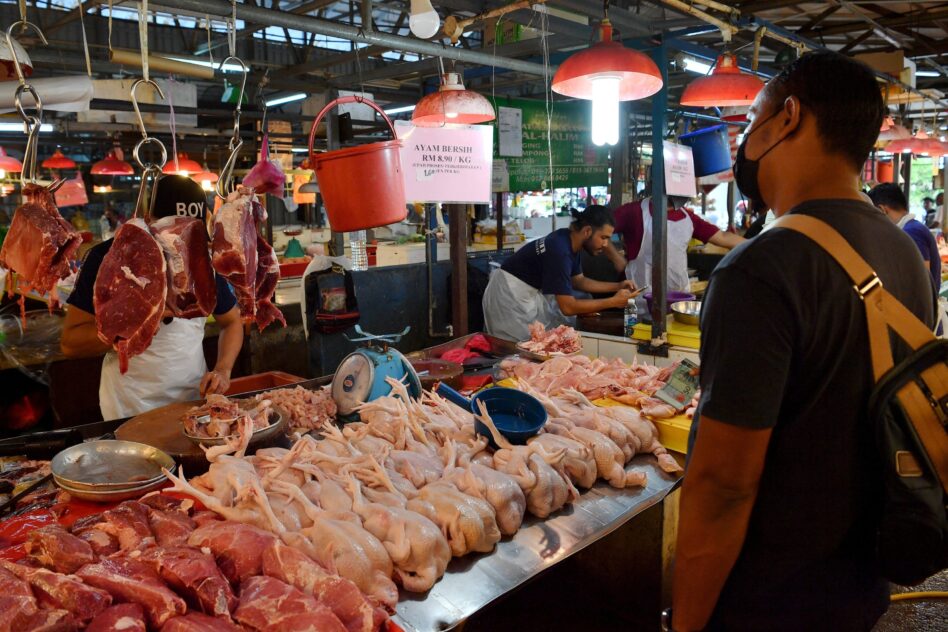By Xavier Kong
Recently we have seen a strong recurrence of the term “gig economy”, with highlights including the FoodPanda riders’ strike, which saw the intervention of Youth and Sports Minister Syed Saddiq Syed Abdul Rahman, as well as the acknowledgement of said economy by Prime Minister Tun Dr Mahathir Mohamad.
This acknowledgement comes to the tune of including the gig economy in the 12th Malaysia Plan, as well as noting that the government is leading several initiatives to ensure that workers’ rights are protected.
But there are problems in the gig economy. The first is the over-regulation of the emerging new trend by the government, and the second is evolving a mechanism that will protect the rights of the gig economy workers while not stifling growth and innovation in this area.
The government itself wants to plug the gig economy in, but whether it is being done in the right way is another question altogether.
PM Mahathir says: “As a new trend, whereby jobs are now more flexible, the government is faced with a challenge with regards to protecting the welfare of the workers involved in this gig economy. This is following the ‘master and servant’ relationship and employment relationships which are convoluted.”
However, this is actually not the first occurrence of a gig economy disruption in Malaysia. Recall when Uber and Grab first arrived in Malaysia, disrupting the taxi industry and causing them to cry foul over the intrusion of the e-hailing services.
Damansara MP Tony Pua also took note of the issue, calling it “one of the biggest conflicts in the public space that represents the traditional economy versus the gig economy”.
On that note, it should be said that this is not the first coining of the term. It is actually attributed to journalist Tina Brown in 2009, when she wrote for the Daily Beast about “a bunch of free-floating projects, consultancies, and part-time bits and pieces” that people she knew were working to make ends meet.
What is the gig economy?
The gig economy also goes by many other names. Agile working, freelancing, the sharing economy, the connected work market and the collaborative economy are just some of those terms. But, for the average Malaysian, what is the gig economy? What does it mean?
Investopedia.com defines the gig economy as “based on flexible, temporary or freelance jobs, often involving connecting with clients or customers through an online platform”.
According to an article by JobStreet.com, the gig economy is “simply, a big group of part-timers and freelancers working on a contractual or ad-hoc basis”. The article further describes workers of the gig economy as contract workers, who come from all walks of life.
Alex Swarbrick, senior consultant at leadership institute Roffey Park, classifies the gig economy workforce as consisting of two tiers with different working conditions.
“You can characterise the workforce in this model like an hourglass. So the people at the top comprise highly skilled, sought-after talent that are relatively well paid and expect to work flexibly. Workers at the bottom end of the hourglass, however, are likely to be on temporary, fixed-term, zero-hour contracts and have a number of jobs that could be characterised as insecure, low-paid work,” he says.

In Malaysia, this means a number of things. Delivering for GrabFood and FoodPanda, as well as other similar enterprises, counts as being part of the gig economy. Being an e-hailing driver under the banner of Grab, MyCar or EzCab counts as well. Even renting out a room through Airbnb counts as being part of the gig economy.
At the same time, being a freelancer – whether you are doing that full-time or on the side to make ends meet – means that you are a part of the gig economy too. It does not matter if you are offering your skills in marketing, programming or content creation – all of these have their place in the up-and-coming gig economy.
Malaysians in the gig economy
Having defined the gig economy and what it means for Malaysians, the realisation comes that there are more Malaysians involved already than previously thought. The prevailing knowledge and media class the gig economy as dominated by delivery riders, e-hailing drivers and homeowners renting out through Airbnb. However, included as well are the number of freelancers in a multitude of fields, which has grown by 31% as of 2017, according to a survey conducted by the Employees’ Provident Fund.
Right now, this translates to 26% of the Malaysian workforce, according to the World Bank, and is seeing that level of growth as more people are drawn to the flexibility offered by working gigs instead of traditional jobs. This marks Malaysia as being the third largest freelancing market in the region.
Local freelancer platform Workana also shares that several skills that are in high demand in Malaysia include web and app development, graphic design and online marketing. This follows the trend where local companies and businesses are moving towards the digital space.
This definition between gigs and freelance work is explained by Swarbrick as well through the hourglass example, noting that “at the top of the hourglass, it is and will remain an employee’s market, and at the bottom, an employer’s market”.
Impact of the gig economy
There is no doubt that the rise of a mobile, agile workforce that can dictate when they wish to work will affect the working landscape of Malaysia. As to how the Malaysian working landscape is affected, Tony Chua, founder and CEO of gig platform Rtist, believes that an overall increase in job completion and satisfaction will be the result.

“While companies will face difficulties in hiring and retaining senior level staff, we would also see the relationship between employers and employees shift from a purely employment basis to that of a partnership. In turn, this will raise the overall job completion and satisfaction,” Chua tells FocusM.
PricewaterhouseCooper UK executive board member for technology and investments Jon Andrews concurs with this, noting that “in five years, we could easily see a world of work where people are more likely to see themselves as members of a particular skill or professional network, than as an employee of a specific company.”
“The world of work is changing. Contract work is in many cases trumping full-time, permanent roles for people due to the flexibility, autonomy and control it offers. People are increasingly using the technology of the connected work market to dictate where and when they work, and for who. This new technology is helping businesses to become more agile, fill their skills gap and respond to market disruptors,” he explains.
Barriers of entry and continuation
When it comes to barriers of entry and continuation to the gig economy, there are a number of ongoing issues at home that continue to cast a shadow. Chief among them is the case where e-hailing drivers are now required to undergo a series of checks and tests in order to continue driving for an e-hailing service.
What this entails is that drivers have to get a medical checkup at an approved clinic, get their car checked by Puspakom Sdn Bhd if it is three years or older, sign up and attend a course at a selected driving school, and sit for an exam based on the course to get their Public Service Vehicle (PSV) licence.
In itself, this sounds fair, especially when shown in the light that this is something both e-hailing drivers and taxi drivers have to go through, thereby levelling the playing field. However, this has been identified as a barrier for entry into the e-hailing industry, as the part-time drivers are exiting due to the logistical hoops that need to be jumped through for the licence, which could cost up to RM800 – the cost could go lower depending on whether the e-hailing company offers subsidies to its drivers.
According to an article by the AskLegal team, who went undercover to acquire a PSV licence, the process took them 23 days in total, with logistical issues including having to wait two to three weeks before being able to attend a course, due to a large number of people looking to get their PSV licence.
A common question following the course was whether or not it would be possible to book a certain day to take the test. However, due to the large number of students, they were told that they will be informed when a slot is available.
These two factors combined seem determined to push out e-hailing drivers, considering how those working full-time jobs would find it very difficult (or more likely not be able) to apply for leave with sufficient notice. Add in the cost of the whole deal, and full-time e-hailing drivers would definitely have to apply before the deadline, or risk not being able to pay the bills as their only means of livelihood is locked behind the licence.
This has caused issues within the e-hailing drivers community, of which only 60,000 of the nationwide figure that numbers in the hundreds of thousands have managed to obtain their PSV licences as of end-October. Complaints range from the cost of the tests to the content, which Grab Drivers Malaysia Association president Arif Asyraf Ali says is irrelevant to the e-hailing industry.
According to the AskLegal article, the module was centered around the taxi industry, including a series of slides about how Japanese taxi drivers are a benchmark of excellent service, as well as how e-hailing drivers have to follow the same dress code as taxi drivers.
Bike-hailing flip flop
At the same time, another issue coming back to bite the government in the proverbial behind is the case where Indonesian bike-hailing company Gojek will be allowed to participate in the coming bike-hailing trials in the Klang Valley. Of course, Malaysia is represented, with local startup Dego Ride, founded by Nabil Feisal Bamadhaj, serving as the Malaysian half of the trial.
This, however, is preceded by the ban on Dego Ride’s services in 2017, when Nabil first launched the service as being able to not only serve as a courier service, but also as a ride-hailing service. This was due to safety concerns, according to the government then. This was refuted by Nabil, who had stated that “safety was their first concern”.
Now, with the persuasion of Indonesian Gojek, the new government has moved back towards allowing test cases within the Klang Valley, starting from January 2020. Grab, which already provides bike-hailing services in Indonesia, Thailand and Vietnam, is currently looking at sentiment on the street about introducing GrabBike here as well.
The decision to allow Gojek in Malaysia has also led to Nabil calling for local players to be prioritised, saying that local players could be given the opportunity to develop a niche market and carve a name for themselves.
Be there, but don’t complicate things
With all these barriers and limitations, it really seems like the government is trying to stifle the gig economy, especially with the way regulations are coming out.
Be that as it may, Nabil is supportive of the government imposing regulations.
“When the people who work for the gig economy are protected, consumers will naturally benefit from a higher quality of service. Definitely, the company will benefit too,” he says.
However, he also cautions against having regulations and guidelines that stifle business and productivity.
“Otherwise it would defeat the purpose of empowerment of the people through technology and providing income access to anyone willing to work, which will be bad for companies like ours,” he adds.
Efosa Ojomo, Global Prosperity lead at the Clayton Christensen Institute for Disruptive Innovation and co-author of “The Prosperity Paradox: How Innovation Can Lift Nations Out Of Poverty”, notes that regulations should happen with regard towards the situation of the individual nation, and the innovation it is seeking to regulate.
He references the Prosperity Paradox, and warns that things should not be made worse when trying to do good.
“Market-creating innovations – innovations that either create a new market or changes a market to be cheaper for its consumers – have to take into account where they are working towards. Gojek, for example, answers a niche in the Indonesian market, but would not function as well in the US where almost nine out of 10 people have cars,” he said.
Ojomo also believes that the question that governments should ask is whether or not they are helping their businesses become more profitable, or if they are helping them be more productive. There needs to be a constant dialogue between the government and the private sector.
“There is a predictable relationship between innovation and regulation. Innovation precedes regulation, so you cannot regulate what you don’t have. In many low- to middle-income countries, unfortunately, regulation precedes innovation,” says Ojomo during a BFM interview.
“Regulation precedes innovation largely because regulations are easier to copy than innovations, so a government can look at the “best” laws, copy them, and not realise that they are stifling innovation. It’s important for governments to understand that the contextual nature of their own regulations is key to helping local innovators create solutions,” he adds.
Institute for Democracy and Economic Affairs research director Laurence Todd believes that the golden rule should be to focus on the objectives of the regulations.
He notes that the government’s tendency is to try to apply existing regulations as closely as possible rather than accept the disruption to the conventional economy and proceed from there.
He gives the example of the regulation of e-hailing services, saying that the demands on drivers were too high.
“This is because the requirements were transplanted from those applied to taxi drivers, when the government needed to guarantee certain standards. But technology has reduced the need for these in many cases,” he says.
He also believes that the government should not be afraid to change existing approaches to regulations now or in the future, and be ready to accept that “we might not get it right the first time”.










